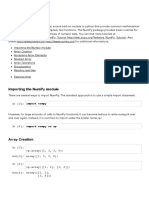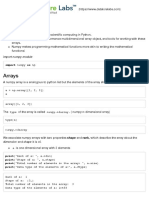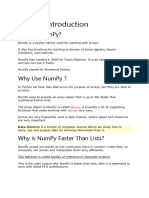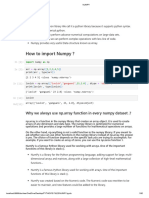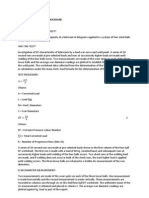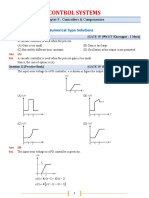0% found this document useful (0 votes)
119 views41 pagesIntroduction To Numpy
NumPy is a Python library used for numerical computing and processing multi-dimensional arrays. It allows efficient operations on arrays including arithmetic, linear algebra, Fourier transforms, and random number generation. NumPy arrays can have multiple dimensions and elements of the same data type. NumPy provides universal functions for element-wise operations, tools for integrating C/C++ and Fortran code, and methods for reading/writing arrays to disk and working with memory-mapped files.
Uploaded by
Ram PrasadCopyright
© © All Rights Reserved
We take content rights seriously. If you suspect this is your content, claim it here.
Available Formats
Download as PDF, TXT or read online on Scribd
0% found this document useful (0 votes)
119 views41 pagesIntroduction To Numpy
NumPy is a Python library used for numerical computing and processing multi-dimensional arrays. It allows efficient operations on arrays including arithmetic, linear algebra, Fourier transforms, and random number generation. NumPy arrays can have multiple dimensions and elements of the same data type. NumPy provides universal functions for element-wise operations, tools for integrating C/C++ and Fortran code, and methods for reading/writing arrays to disk and working with memory-mapped files.
Uploaded by
Ram PrasadCopyright
© © All Rights Reserved
We take content rights seriously. If you suspect this is your content, claim it here.
Available Formats
Download as PDF, TXT or read online on Scribd
/ 41





